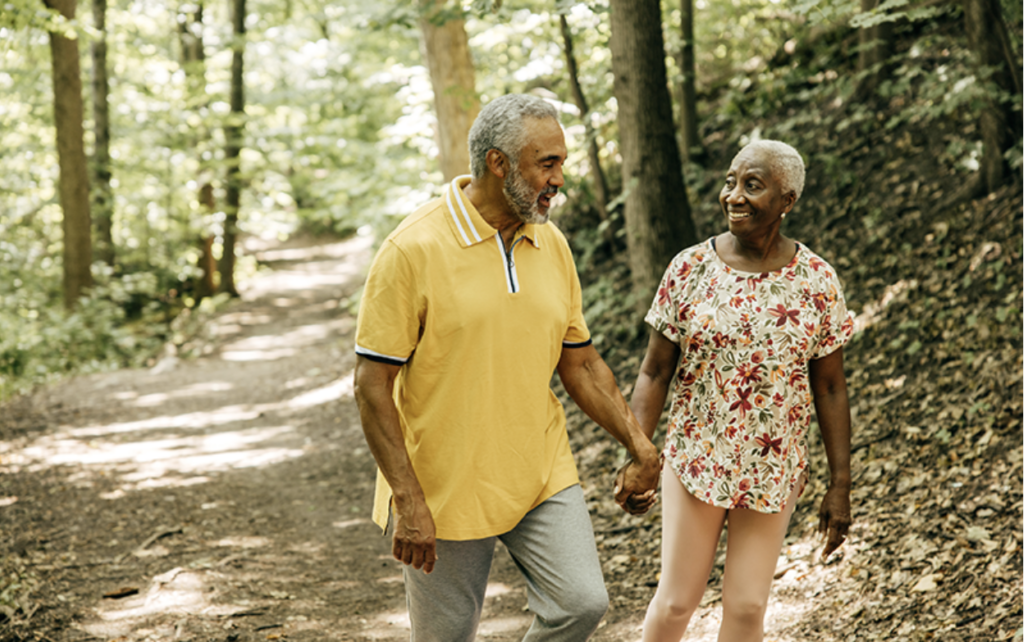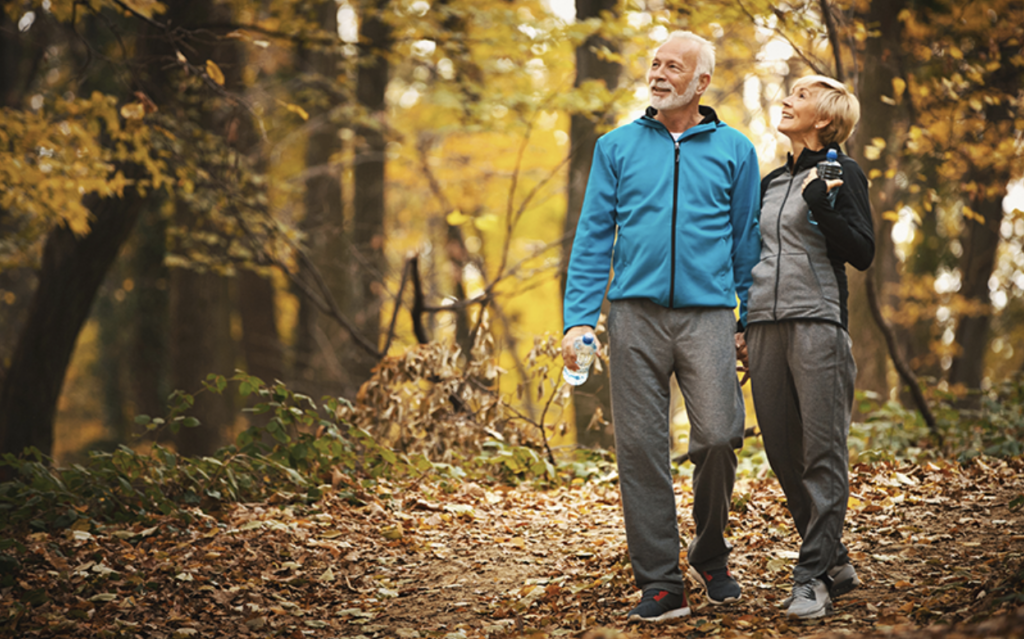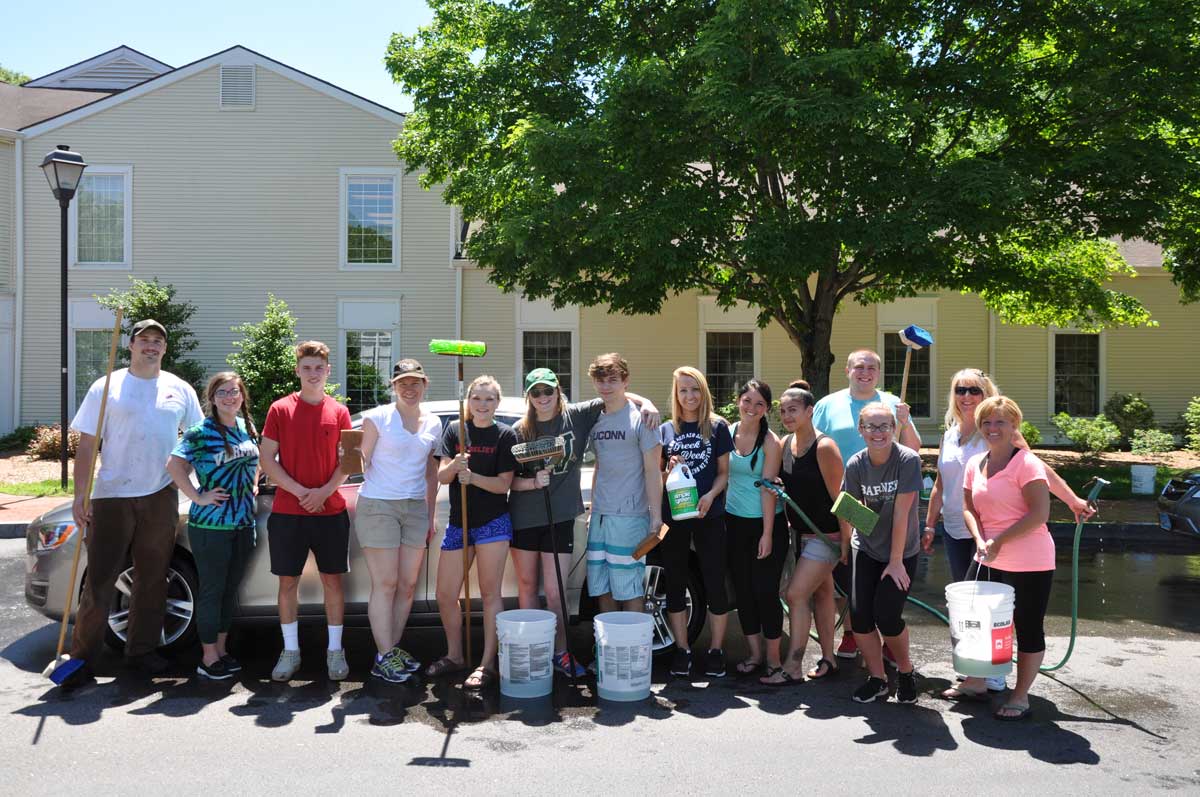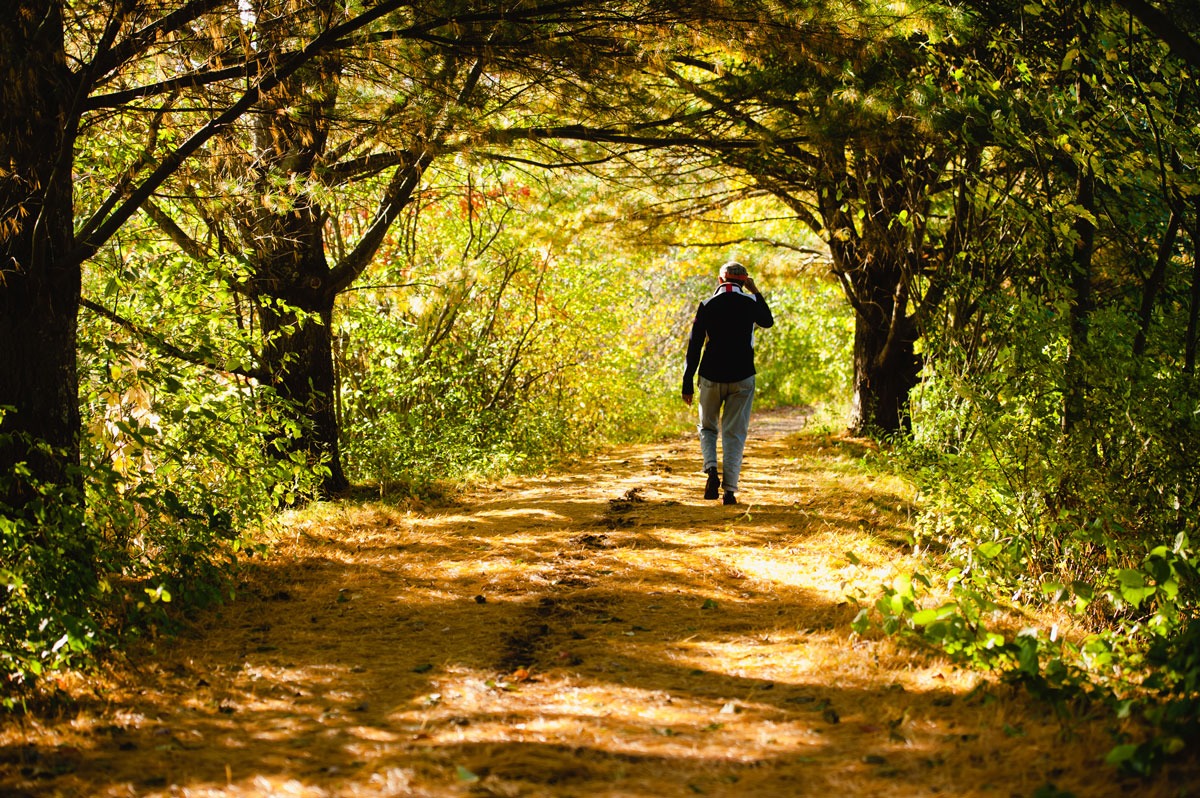Important Health Benefits of Walking for Seniors
September 25, 2023
There’s nothing more therapeutic than going for a walk in the fresh air and being surrounded by nature. As a low-impact form of exercise that’s easy on joints and friendly to all fitness levels, walking is a great choice of physical activity for older adults.
Once you learn the health benefits of walking for seniors, you’ll be inspired to put on your sneakers and start enjoying those benefits for yourself.
Health Benefits of Walking for Seniors
Seniors who walk regularly gain many health benefits that improve their physical, mental, and emotional well-being. According to The National Highway Traffic Safety Administration (NHTSA), regular walking provides seniors with health benefits like:
Strengthened Cardiovascular System
Walking will elevate your heart rate and improve your resting heart rate. When you improve your cardiovascular system, you lower your risk of a heart attack.
Lowered Cholesterol
For older adults struggling with high cholesterol, walking is an easy change to your lifestyle that can help lower it. As you lower your cholesterol, you also decrease your risk of heart disease.
Lowered Blood Pressure
Walking is beneficial to seniors with high blood pressure because walking naturally lowers blood pressure. Having lower blood pressure also reduces your risk of stroke.
Creation of Growth Hormones
Walking at a brisk pace helps your body to create growth hormones that help strengthen your muscles. This can also help with your stability, balance, and overall mobility.
Aid with Insulin Production
Both older adults with diabetes and those without can benefit from walking. Exercise increases insulin production, which can help those with diabetes manage high blood sugar levels. For older adults who don’t have diabetes, incorporating walking into your daily routine can help prevent diabetes.
Improved Mental Health
When you walk, your body will produce endorphins. This can decrease your stress, reduce symptoms of depression and anxiety, and improve your mood. It may be easier to relax and help you get more restful sleep.
Opportunities for Social Interaction
The best part about walking is that it can be as social as you want. If you’re part of a walking program, you can talk to your friends while you walk. You may not even think of your walk as a physical activity – it’s the perfect time to catch up with friends.

How to Include Walking in Your Daily Routine
When you’re first starting out with adding walking to your daily routine, you may wonder how you’re going to create a schedule and stick with it. Here are a couple of tips that can help you make walking a regular part of your routine – and soon, you won’t even think about walking as exercise; you’ll be looking forward to getting up and out each day.
Get Ready for a Walk Each Day
As you’re establishing a new habit, creating a time in your schedule to get ready for a walk can help your mentality of going for a daily walk. You put on your socks and shoes and head out the door.
It’s much easier to make your goal to simply get up and out. You’re going to walk for as long or as little as you like. This will help you establish the habit of going for a walk.
Have the Right Gear
Walking is an inexpensive way to exercise because you can walk anywhere. All you need to invest in is a comfortable pair of shoes that will support you while you walk.
If you’re walking in warmer weather, be sure to wear clothes that are light and protect you from the sun. As the weather gets cooler, add layers so you’re not too uncomfortable to stay out for your walk.
Make Small Commitments
When establishing a routine, it’s common to say you’re going to walk for 20 minutes a day. But it can be overwhelming if you’re building strength or making a new lifestyle change.
On the third day of your new routine, a 20-minute walk could sound like too much, and it’s easy to have an “all or nothing” approach, which can result in not going for a walk at all.
As you first start going for a walk, you can use other markers like walking to the end of the street or around the block. When you get more comfortable with walking, you can set a new goal that’s slightly further. Before you know it, you could walk from 30 minutes to an hour each day without realizing it.
Include Friends
For some people, having a friend to go on a walk with them can help with motivation. Instead of viewing your upcoming walk as your workout, you’re thinking of spending time with a friend.
Create a schedule that works for you and a friend who is also committed to spending more time walking. You don’t have to stop at inviting one person–before you know it, you might create your own walking group.

Explore Your Wellness Opportunities at Essex Meadows
At Essex Meadows, our residents have all kinds of options to maintain their wellness. We approach health with a holistic view, considering each resident’s physical, intellectual, emotional, social, occupational, spiritual, and environmental health and providing health care services so you get the well-rounded care you need to thrive.
Our community is located in beautiful Essex, CT, and our 104 acre campus has several hiking trails that residents enjoy. Plus, you’ll always find a friendly resident who will want to join you for a walk.
Residents of Essex Meadows are empowered to live their best lives physically, socially, and emotionally. If you’d like to learn more about joining our vibrant community, call us at 860-248-6371.



